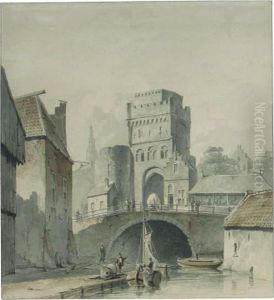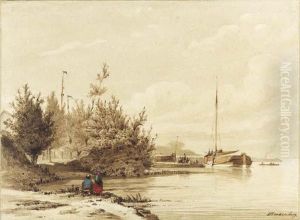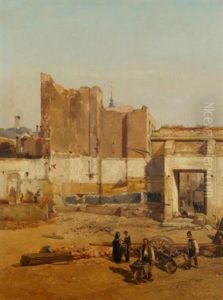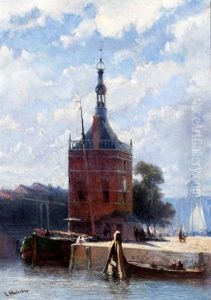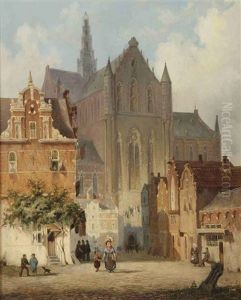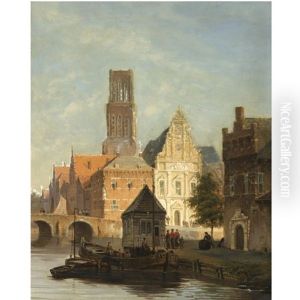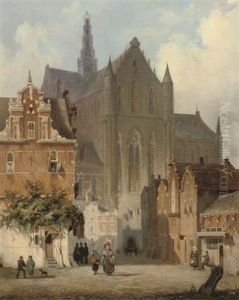Lambertus Hardenberg Paintings
Lambertus Hardenberg was a 19th-century Dutch painter, born on December 24, 1822, in The Hague, Netherlands. Not to be confused with the earlier German artist Lambert Hardenberg, who lived in the late 15th and early 16th centuries, Lambertus was a part of the Dutch Romantic period, a movement which emphasized emotion, individualism, and the glorification of the past and nature.
Hardenberg was known for his landscape paintings and his ability to capture the serene beauty of the Dutch countryside. He was part of a tradition of landscape artists who flourished in the Netherlands during this period. His works often featured rural scenes, waterways, and the everyday life of the Dutch people, reflecting a nationalistic pride in the beauty of the homeland.
Throughout his career, Lambertus Hardenberg participated in the artistic life of the Netherlands. However, despite his contributions to Dutch art, he did not gain the same level of fame and recognition as some of his contemporaries, such as the Hague School painters, who were known for their more subdued and realistic depictions of the Dutch landscape.
Hardenberg's style was characterized by a more romantic and idealized approach, with a focus on rich colors and dramatic lighting effects. This romantic approach was somewhat at odds with the emerging trends of realism and eventually impressionism that were becoming more popular across Europe at the time.
Lambertus Hardenberg's death occurred on August 25, 1900, in The Hague. Although he may not be as well-known as other artists from his time, his body of work provides a valuable insight into the romantic sensibilities of Dutch landscape painting in the 19th century and contributes to the broader understanding of European art from this period.
